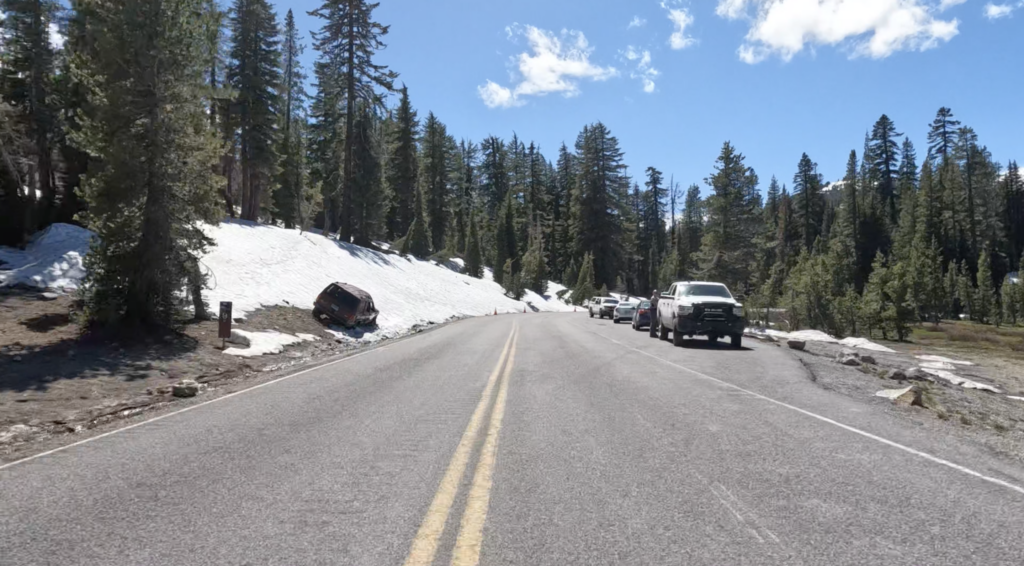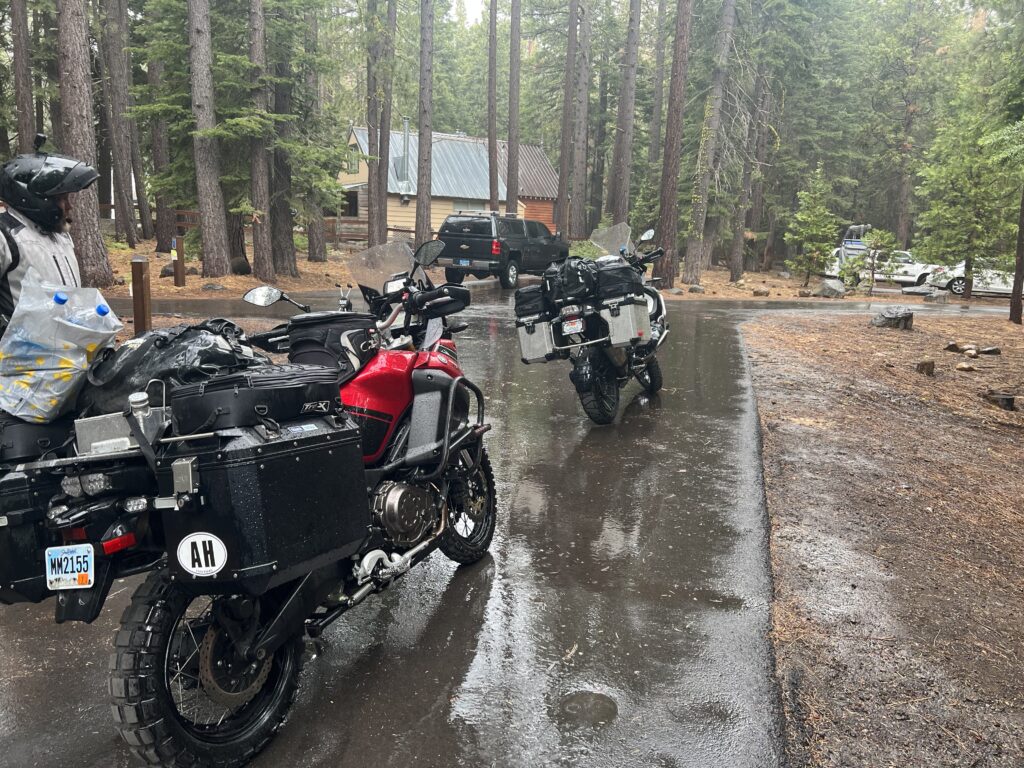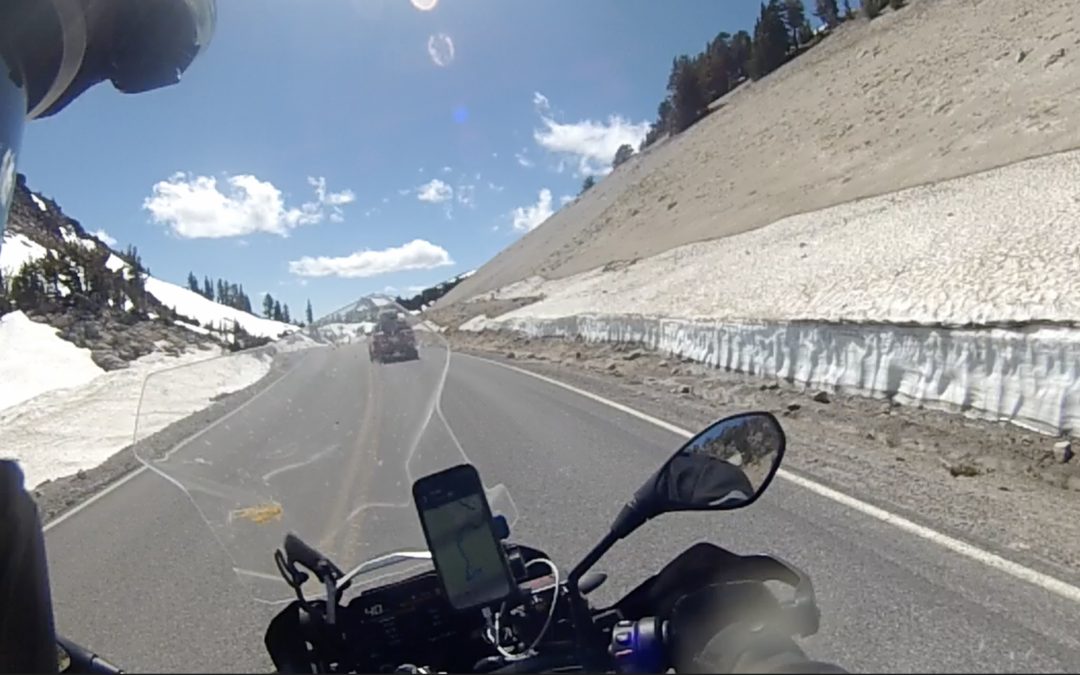Winter is just around the corner, and in most of the United States, motorcycle riders are putting their motorcycles away. In Southern California, we have the luxury of riding year-round. Even though our weather is usually above freezing in Southern California, it does not mean we don’t come across rain, snow, and ice.
Riding in the rain and snow can make a motorcycle trip completely miserable, but there are some things we can do to stay warm and be safe while riding, no matter what the weather throws at us. Whether we are riding in the Malibu Canyons or in the mountains, there is always the possibility of snow, ice, and rain while riding. We will get into riding the roads during the wintertime and riding gear to wear to help keep us warm, dry and safe.
Cold Weather Riding
For the riders willing to brave the cold and ride the canyons and get into the mountains during the wintertime, there are some things to consider:
Ice is the most dangerous thing riders need to consider when riding in the canyons and mountains during the winter. Sometimes you can see the ice, and sometimes you cannot. If you are going to ride in the mountains, you need to check the weather for the last week and see if the temperatures in that area dropped under 32 degrees. If the temperatures did drop under 32 degrees, there is a high chance of ice being on the road, especially if it recently rained or snowed. Even if it didn’t snow or rain recently, it takes some water to be on the road and the temperatures to drop under 32 degrees to get ice.
Black ice blends in with the asphalt and is extremely difficult to see. Black ice is probably the most dangerous because we cannot see it most of the time, and if we hit the ice with either tire, we will most likely be involved in a traffic accident.
Even if the weather has been warm for a few days, there is still a high chance of ice being on the road in the shaded road areas. Pay closer attention to the road and signs if you want to ride the canyons. Usually, Caltrans or your local public works will drive around the canyons and look for ice, but they don’t always catch it until someone reports it or someone crashes.

Tourists/Pedestrians
If you are going into the mountains during winter, especially if it’s going toward a tourist area, there is a high risk of people driving up there and stopping on the side of the road looking for snow. They often leave their car and walk around on the road or even make U-turns from the shoulder because they see a small patch of snow on the ground they had just passed.

Wind Chill
When we leave the house for our ride, let’s say the temperature outside is 60 degrees. Once you get on the road and start cruising, the temperature can go from 60 degrees outside and feel more like 40 degrees as we continue down the road. A rule of thumb to use when riding is to subtract 20 degrees from whatever the temperature is when you are sitting still.

Snow
If the roads have been cleared of snow, and there is snow still on the side, you must be careful. The snow will melt throughout the day and run across the street. Once it gets dark and the temperatures drop below 32 degrees, there is a high chance that it will turn into solid ice.

I will ride in all sorts of weather as long as the road isn’t flooded and the snow isn’t sticking to the ground. Once the road starts filling up with water or the snow starts sticking to the ground, our chances of getting hurt or killed in a motorcycle accident go way up. That’s usually when it’s time to stop riding for the day or take a break until the weather clears up.
Even if you ride in Southern California and ride the canyons near the coast, there is still a chance that you could come across ice. Even if you have never seen ice in your area, remember that all it takes is water or some liquid and the temperatures to drop to 32 degrees. In the shaded areas of a canyon, the temperature can be significantly lower, preventing ice from melting and can also help water turn into ice.
You can still have the same issue with ice when riding on regular streets. If you’re riding near planters either on the side of the road or in the middle and the temperatures are getting below 32 degrees, there is a high chance that the water can freeze, causing a bad situation.
Riding Gear
When it is raining and cold, and we are not wearing proper gear, it could turn into a hospital visit if we are not careful. We could end up with frostbite, especially on our hands and feet. We could have hypothermia, where our body temperature drops to a dangerous level. When a person is cold, we start losing blood flow to our extremities which can cause our hands, arms, feet, and legs not to work properly and cause frostbite. If our hands and legs are not working correctly, we will have difficulty shifting, braking, applying the throttle, using turn signals, physically turning the motorcycle, and using the horn. When we get cold, we start focusing on how miserable we are and the physical operation of the bike instead of the road and the hazards on the road. Not having the physical and mental ability to focus on the road could cause a traffic accident and send us to the hospital.
There is some great gear out there to help keep you warm and protected from the elements, whether you have a huge or small budget. Any winter gear you do use, please make sure it’s motorcycle specific. Wearing a regular winter jacket will not save your skin from road rash. You will want something that will protect you from road rash and the weather.
We will start with protecting our heads and work down to our feet:
Head
Wearing a full-face or modular helmet with the face shield down can help significantly reduce the cold wind, snow, and rain hitting our faces. When you have your face shield down, it can cause it to fog up quickly due to your breath. There are a couple of ways you can combat a foggy face shield. The first way is an antifog screen that connects to the inside of your face shield and reduces the fog. If you don’t have that option, you can try various antifog spray types. You may have to try several brands to find one that works great for you. Your other choice would be to leave your face shield slightly open to allow airflow. If you are wearing a ¾ helmet or half-shell helmet, you will have to depend on a neck warmer that will also cover your face.
Neck
Wearing a neck warmer will help keep cold air out of your helmet and helps prevent cold air from entering your jacket. If it’s raining outside, you may want something a little more rainproof, so you’re not wearing a wet neck warmer that will make you cold again.
Body
Most synthetic motorcycle jackets and pants have three layers: the outer layer, which will have the armor; the rain liner, which will protect your body from the rain; and a fleece liner or some layer to help keep you warm. Another great option is to add heated gear powered by a portable battery or connect the heated equipment to the motorcycle battery. If you wear leather gear, you usually don’t have the option of extra layers that attach to your motorcycle pants and jacket and may want to consider heated gear or thermals.
Feet
Cold feet can be utterly miserable on a long ride. I suggest having insulated boots when riding in winter and always having an extra pair of socks just in case they get soaked. They also have heated socks that can be operated by a portable battery or connected to the motorcycle battery.
There are many great options for warm gear to help keep you warm and dry. Sometimes you may be riding in the mountains where it could be in the 30’s and 40’s, and then you get out of the mountains, and it’s in the 70’s. Dressing in layers or having gear that you can take out the inserts can help make you more comfortable and prevent you from either freezing or overheating.
No matter where you ride, pay attention to the road to avoid a motorcycle accident, and bring extra gear like hand warmers, a small blanket or emergency blanket, a first aid kit, a small tool kit, extra socks, and extra clothes. You can still enjoy riding during the wintertime. You may have to do a little more preparation before you ride.










